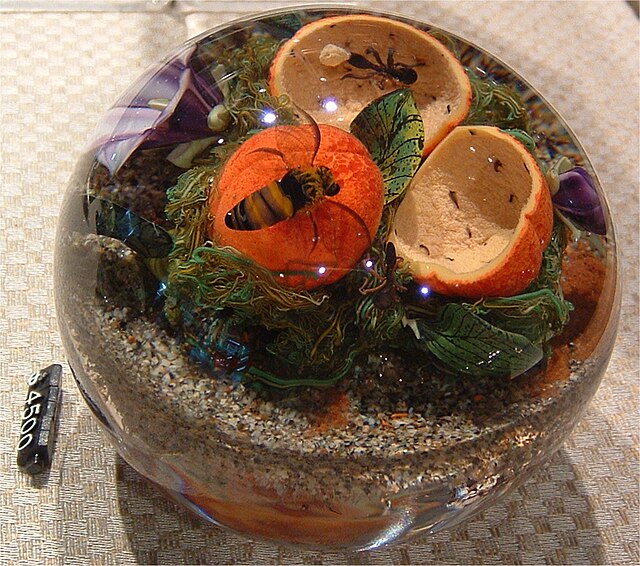Harvey Littleton was an American glass artist and educator, one of the founders of the studio glass movement; he is often referred to as the "Father of the Studio Glass Movement". Born in Corning, New York, he grew up in the shadow of Corning Glass Works, where his father headed Research and Development during the 1930s. Expected by his father to enter the field of physics, Littleton instead chose a career in art, gaining recognition first as a ceramist and later as a glassblower and sculptor in glass. In the latter capacity he was very influential, organizing the first glassblowing seminar aimed at the studio artist in 1962, on the grounds of the Toledo Museum of Art. Imbued with the prevailing view at the time that glassblowing could only be done on the factory floor, separated from the designer at his desk, Littleton aimed to put it within the reach of the individual studio artist.
Harvey Littleton hot-working glass, c. 1983
A selection of Harvey Littleton's 1950s work in ceramics
Harvey Littleton, Yellow Ruby Sliced Descending Form (c. 1983) This four-part glass sculpture is typical of the artist's "Arc" forms
Studio glass is the modern use of glass as an artistic medium to produce sculptures or three-dimensional artworks in the fine arts. The glass objects created are intended to make a sculptural or decorative statement, and typically serve no useful function. Though usage varies, the term is properly restricted to glass made as art in small workshops, typically with the personal involvement of the artist who designed the piece. This is in contrast to art glass, made by craftsmen in factories, and glass art, covering the whole range of glass with artistic interest made throughout history. Both art glass and studio glass originate in the 19th century, and the terms compare with studio pottery and art pottery, but in glass the term "studio glass" is mostly used for work made in the period beginning in the 1960s with a major revival in interest in artistic glassmaking.

Handmade studio glass using complex techniques to achieve highly detailed patterns through murrine or caneworking, by American artist David Patchen
Paperweight with items inside the glass, Corning Museum of Glass
A vase being created at the Reijmyre glassworks, Sweden
Nuptial bowl by Angelo Barovier, Murano Glass Museum







